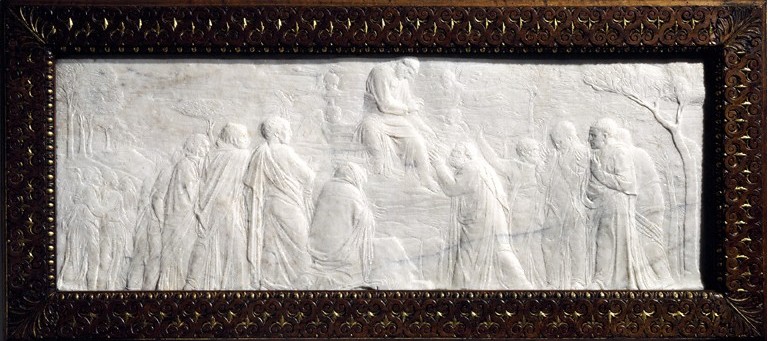It is a relatively little known fact that the Victoria and Albert Museum owns the most remarkable collection of Italian Renaissance sculpture outside Italy; and the jewel in the crown of that collection is Donatello’s marble bas-relief of The Ascension with Christ Giving the Keys to St Peter. Acquired for the museum in 1861 by the enterprising scholar and connnoisseur John Charles Robinson, the work has never been displayed outside London since that time – never, that is, until now. Loaned to the Henry Moore Institute in Leeds, Donatello’s Ascension is the star attraction in a compact and thought-provoking new exhibition, curated by Penelope Curtis and colleagues, which sets out to explore the manifold uses and associations of relief sculpture in fifteenth-century Italy, during and just after the first flowering of the Florentine Renaissance.
The Henry Moore Institute, which has no permanent collection of its own, has to rely on the generosity of lending institutions to function as it was set up to do – not just as a temporary exhibition space, but also as a forum for thinking about different aspects of sculpture. In this case, that generosity has been large indeed. “Depth of Field: The Place of Relief in the Time of Donatello” contains nearly fifty works of fine and applied art, most from the fifteenth century, nearly all of which have been lent by the V&A (although a few choice exhibits have also been furnished by the British Museum). Released from the dark and distinctly dowdy galleries in South Kensington, their usual home, into the tall and light-filled spaces of a modern art gallery, many of these works appear thoroughly transformed. This is partly because they are relief sculptures, and therefore particularly responsive to improved lighting. But the truth is that nearly all of the V&A’s...

Depth of Field: The Place of Relief in the Time of Donatello, at the Henry Moore Institute, Leeds
26-09-2004

